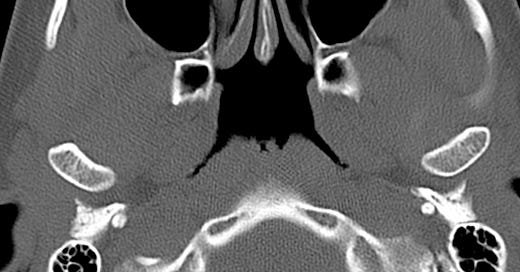Nasal fractures are usually evident on clinical examination. Deformity, laceration, and ecchymosis are common. Epistaxis and CSF rhinorrhea indicate potentially severe injuries to the ethmoid bones or nasal septum.
If there is clinical concern for septal fracture or adjacent facial bone injury, or if operative reduction is planned, CT scanning provides more comprehensive evaluation than plain radiographs, which are rarely helpful or indicated.
Nasal fractures often make up a part of a larger facial fracture complex in severe facial injury. Most are oriented perpendicular to the nasal bridge, cross the nasomaxillary suture, and traverse the groove for the nasociliary nerve.
Because most simple nasal bone fractures are managed conservatively, clinical examination should include a search for septal deformity or hematoma. Although not specific for fracture, nasal septal hematomas are associated with significant morbidity and may lead to septal perforation or necrosis if untreated. CT findings include fracture through the bony septum and adjacent septal soft tissue swelling.
Minimally depressed, isolated right nasal bone fracture. The nasal septum and turbinates are normal.
Nasal bone and nasal septal fracture. Osseous septal fracture without associated hematoma. Bilateral minimally displaced nasal bone fractures.
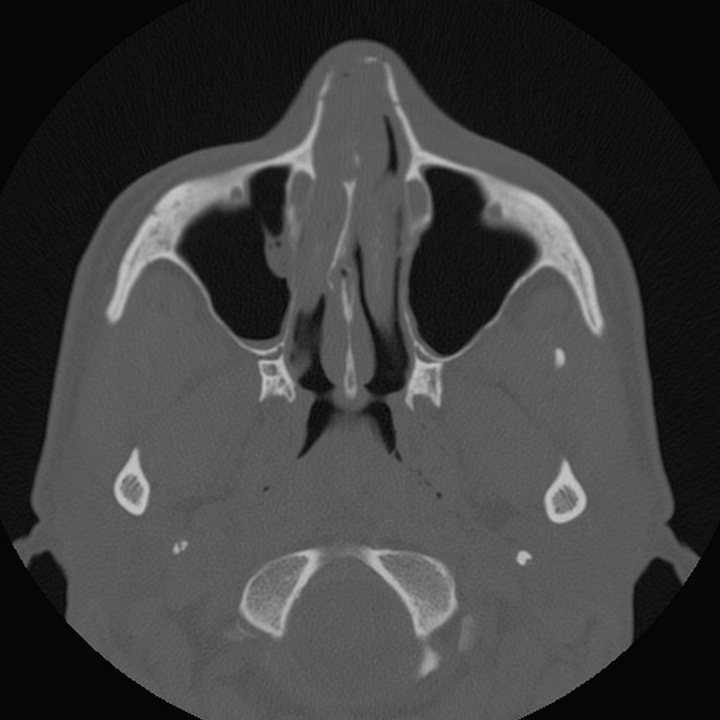
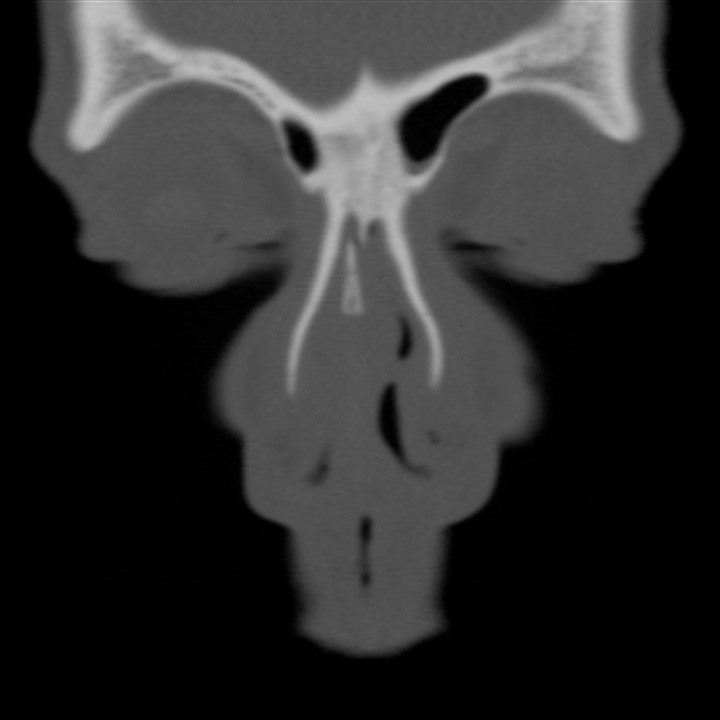
Nasal septal fracture with hematoma. Anterior septal soft tissue thickening. Osseous septal fracture.
Naso-orbito-ethmoid (NOE) fractures are complex fractures of the nasal bones and the upper central mid-face from direct impact to the nasal bridge. Fragments of the nasal bones, ethmoid air cells, and medial orbital walls are compressed and displaced posteriorly toward the sphenoid sinus. Cribriform plate and ethmoid roof fractures, when present, can be associated with anosmia, pneumocephalus, or CSF leak. Complications include ocular, nasolacrimal duct, or nasofrontal duct injury. The medial canthal ligament, which anchors the globe, can be disrupted, with consequent enophthalmos, telecanthus, or ptosis. Traumatic nasolacrimal duct obstruction may require surgical repair.
CT scans should include reformations in three planes, with particular attention to the nasolacrimal ducts, attachment of the medial canthal ligament, and integrity of the anterior skull base.
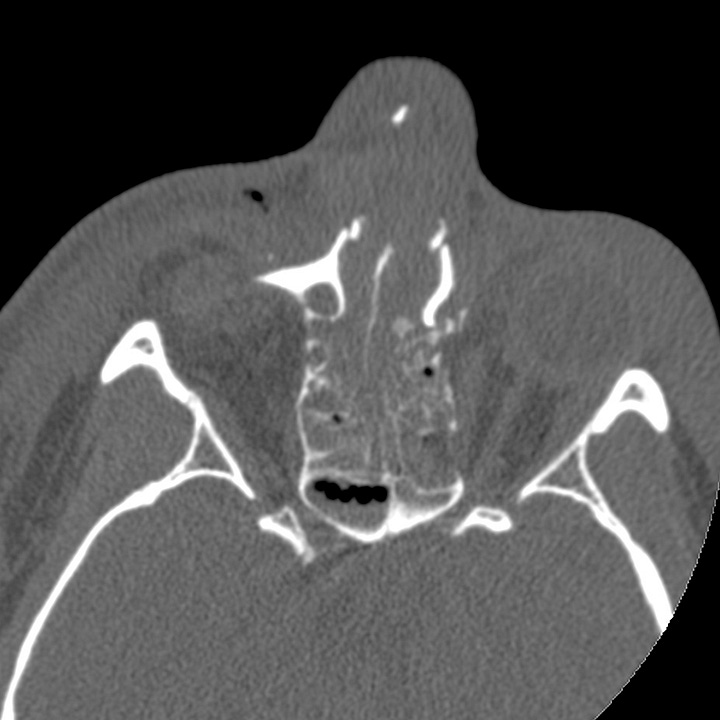
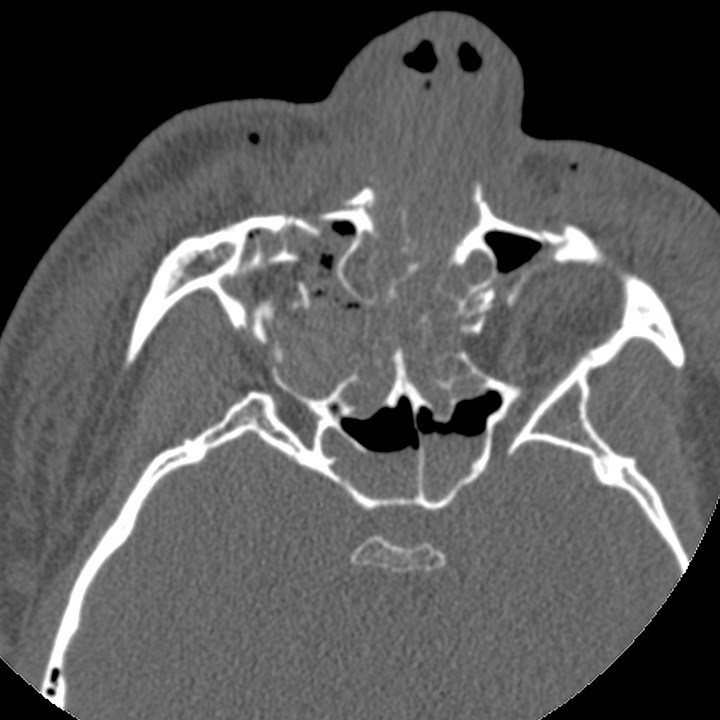
Naso-orbital-ethmoid fracture. Severely comminuted nasal, ethmoid, and bilateral medial orbital wall fractures, with posterior telescoping of the ethmoid fragments. Extensive facial soft tissue swelling with associated bilateral intraorbital hematomas.

